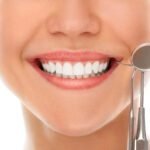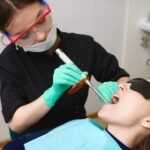Table of Contents
Understanding the Importance of Oral Hygiene
Maintaining good oral hygiene while Having Braces on Teeth is crucial for overall health and well-being. It involves practicing habits that keep your mouth clean and free from harmful bacteria. By understanding the importance of oral hygiene, you can take proactive steps to protect your teeth and gums and prevent oral health problems.
Poor oral hygiene can lead to a variety of issues, such as tooth decay, gum disease, and bad breath. Studies have shown that oral health is closely linked to other health conditions, including heart disease and diabetes. By prioritizing oral hygiene, you can lower the risk of developing these systemic health problems.
Brushing your teeth at least twice a day and flossing once a day are key components of a good oral hygiene routine. This helps remove plaque and food particles that can accumulate on your teeth and gums. Regular dental check-ups are also essential for maintaining oral health. Dentists can detect early signs of tooth decay or gum disease and provide appropriate treatment to prevent further complications.
In conclusion, understanding the importance of oral hygiene is essential for maintaining good oral health and overall well-being. By practicing proper oral hygiene habits and seeking regular dental care, you can enjoy a healthy and beautiful smile for years to come.
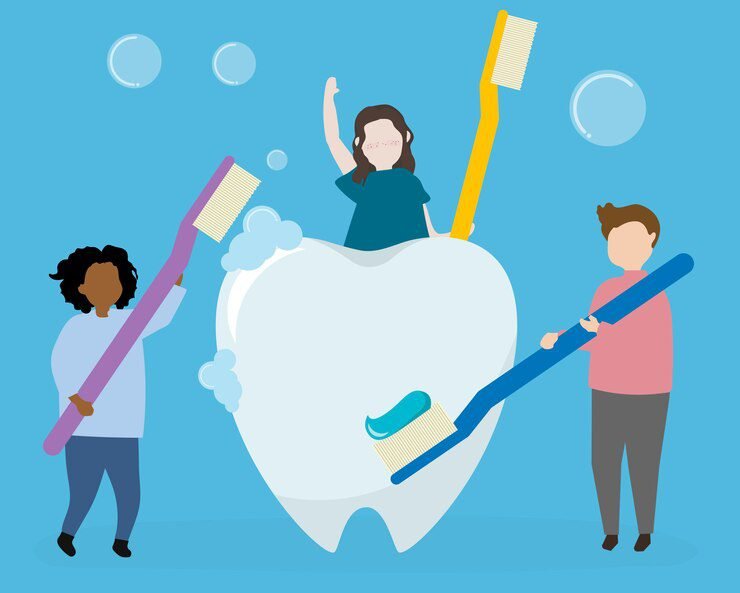

The Impact of Braces on Oral Health
Braces are a common orthodontic treatment used to correct misaligned teeth and jaw issues. While braces can significantly improve a person’s smile and overall dental alignment, they can also have an impact on oral health. Understanding these impacts is crucial for individuals undergoing orthodontic treatment to maintain a healthy and clean mouth.
One of the most notable impacts of braces on oral health is the increased difficulty in maintaining proper oral hygiene. The brackets and wires of braces create areas that are hard to clean and can harbor bacteria, plaque, and food particles. Failure to adequately remove these substances can lead to tooth decay, gum disease, and bad breath. Therefore, individuals with braces must be diligent in their oral hygiene routine, paying extra attention to areas around the brackets and wires. Regular brushing and flossing, as well as using specialized tools such as interdental brushes, are essential for maintaining good oral health during orthodontic treatment.
It is also important to note that braces can sometimes cause temporary discomfort and irritation in the mouth. The pressure applied to the teeth by the brackets and wires can lead to soreness, especially after adjustments. In addition, the wires and brackets may rub against the soft tissues of the mouth, causing ulcers or sores. However, these discomforts can be managed with the use of orthodontic wax, which can be applied to the braces to alleviate irritation. It is crucial to communicate any persistent or severe discomfort to your orthodontist, as they can make necessary adjustments to ensure your treatment is comfortable and effective.
Common Oral Health Issues Associated with Braces
Common Oral Health Issues Associated with Braces
Wearing braces is a common orthodontic treatment to correct misaligned teeth and achieve a straight, beautiful smile. However, it’s important to be aware of the potential oral health issues that can arise during this process. One common issue is tooth decay. The brackets and wires of braces can make it challenging to properly clean the teeth, leading to the buildup of plaque and bacteria. This can result in tooth decay if not addressed promptly. Additionally, the pressure exerted by braces can cause the tooth enamel to weaken, making the teeth more susceptible to cavities. Therefore, it is crucial to maintain a diligent oral hygiene routine while wearing braces to minimize the risk of tooth decay.
Another oral health issue that can occur with braces is gum inflammation or gingivitis. The presence of brackets and wires can create spaces where food particles and bacteria can accumulate, leading to the development of plaque and gum irritation. If left untreated, this can progress to gingivitis, which is characterized by swollen, red, and bleeding gums. It is important to note that gingivitis, if not properly managed, can eventually lead to more severe gum disease, known as periodontitis. Therefore, paying close attention to gum health and maintaining a thorough oral hygiene routine is crucial during orthodontic treatment.
| Oral Health Issue | Description |
|---|---|
| Tooth Decay | Braces can make it challenging to clean teeth thoroughly, leading to the accumulation of plaque and bacteria, increasing the risk of tooth decay. |
| Gum Disease | Difficulty in cleaning around braces can lead to the accumulation of plaque and tartar, increasing the risk of gum disease (gingivitis and periodontitis). |
| Enamel Demineralization | Poor oral hygiene with braces can result in demineralization of enamel, leading to white spots or decay around brackets. |
| Soft Tissue Irritation | Braces can irritate the soft tissues inside the mouth, causing discomfort, sores, and ulcers until the mouth adjusts to the presence of braces. |
| Root Resorption | In rare cases, the pressure exerted by braces on teeth can lead to root resorption, where the roots of the teeth shorten due to the breakdown of bone tissue. |
| TMJ Disorders | Misalignment of the jaw caused by braces can contribute to temporomandibular joint (TMJ) disorders, leading to jaw pain, clicking, and difficulty chewing. |
| Food Debris Accumulation | Food particles can get trapped in and around braces, increasing the risk of bacterial growth and contributing to bad breath and oral health issues. |
| Orthodontic Emergencies | Braces may cause emergencies such as broken wires, loose brackets, or bands, which require immediate attention from an orthodontist to prevent complications. |
Choosing the Right Toothbrush and Toothpaste for Braces
When it comes to maintaining oral hygiene with braces, choosing the right toothbrush and toothpaste is essential. The unique structure of braces requires special attention to ensure that every nook and cranny is effectively cleaned.
For a toothbrush, it is recommended to use a soft-bristled brush. Soft bristles are gentle on the gums and less likely to cause damage to the braces. Additionally, a smaller brush head can make it easier to reach those hard-to-reach areas. Some toothbrushes specifically designed for braces have V-shaped bristles to effectively clean around the brackets and wires.
As for toothpaste, it is important to choose a fluoride toothpaste. Fluoride helps strengthen the enamel and prevent tooth decay, which is particularly important when wearing braces. Look for a toothpaste that has the American Dental Association (ADA) seal of approval, as this indicates that the product has been rigorously tested for safety and effectiveness. Furthermore, consider using a toothpaste that is specifically formulated for braces, as it may contain additional ingredients to address common issues such as plaque buildup.
Proper Brushing Techniques for Braces
Maintaining proper oral hygiene is crucial when wearing braces as it helps prevent tooth decay, gum disease, and other common oral health issues. Brushing your teeth regularly and correctly is an essential part of this hygiene routine. When it comes to brushing techniques for braces, it’s important to pay close attention to the wires and brackets to ensure efficient plaque removal.
Start by using a soft-bristled toothbrush at a 45-degree angle, gently brushing in a circular motion. Take extra care to reach all areas of your mouth, paying attention to the gum line, the front and back of the teeth, and the brackets. Brushing for a minimum of two minutes is recommended to thoroughly clean your teeth and braces. Remember to use a fluoride toothpaste to strengthen your tooth enamel and protect against decay. Additionally, consider using an interdental toothbrush or an electric toothbrush for a more thorough cleaning experience.
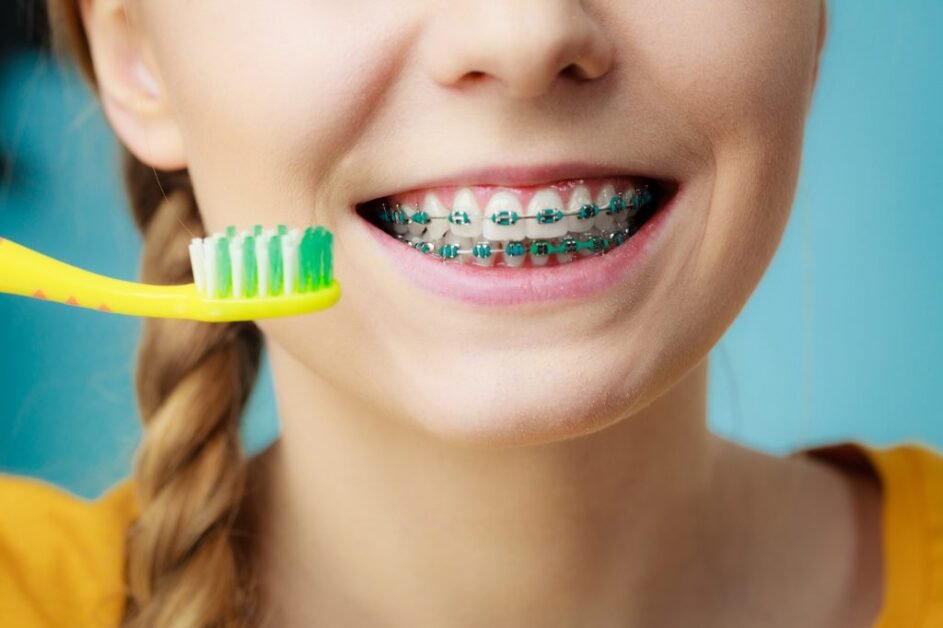

Flossing Techniques for Braces
Flossing is an essential component of oral hygiene, especially for individuals with braces. Braces create additional spaces for food particles to get trapped and increase the risk of plaque and tartar build-up. Therefore, regular flossing is crucial to maintain healthy gums and prevent dental issues.
When flossing with braces, it is important to use a floss threader. This tool helps to guide the floss underneath the wires, allowing you to clean between the teeth effectively. Gently slide the floss up and down against the sides of each tooth, making sure to reach the gumline. Take care not to snap the floss, as it can damage the wires or brackets. It is recommended to floss at least once a day, preferably before bedtime, to remove any remaining food particles and plaque. Remember, proper flossing techniques combined with regular brushing and dental visits will contribute to a healthy smile during your orthodontic journey.
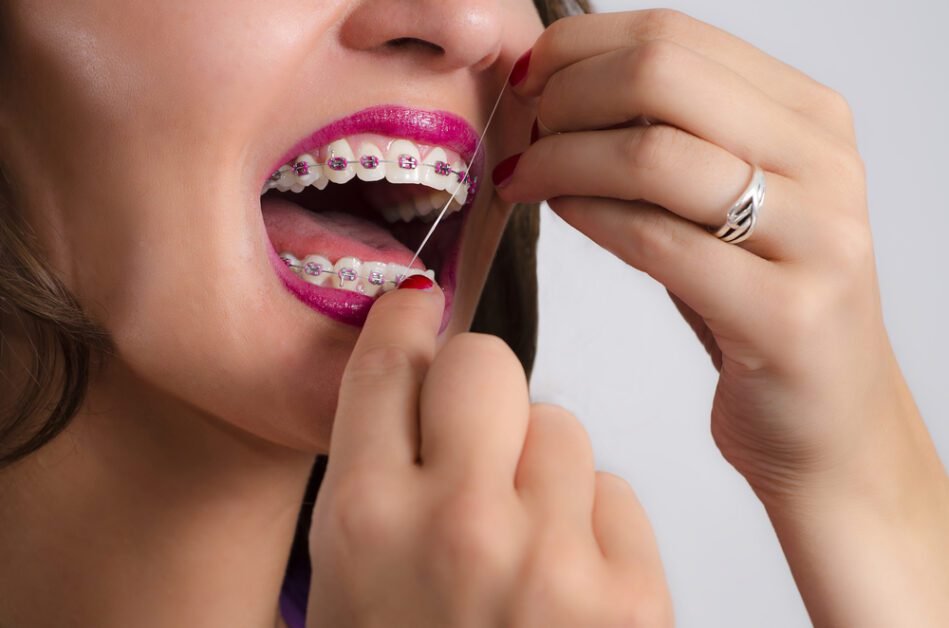

The Role of Mouthwash in Oral Hygiene with Braces
Mouthwash is a valuable tool in maintaining oral hygiene, especially for individuals with braces. Braces can make it challenging to reach certain areas of the mouth, making thorough cleaning difficult. Mouthwash can help to combat this issue by reaching areas that may be missed by regular brushing and flossing.
One of the key benefits of using mouthwash with braces is its ability to kill bacteria. Braces can create small spaces where bacteria can accumulate, increasing the risk of plaque build-up and gum disease. Mouthwash containing antibacterial agents, such as chlorhexidine, can help to kill these bacteria, reducing the risk of oral health issues. Additionally, mouthwash can freshen breath, providing a pleasant feeling and improving overall oral hygiene.
It is important to note that mouthwash alone is not a substitute for regular brushing and flossing. While it can provide additional benefits, it should be used as part of a comprehensive oral hygiene routine. Be sure to choose a mouthwash specifically formulated for individuals with braces, as it may contain ingredients that help to protect against demineralization and enamel damage. Consulting with your orthodontist can help you choose the most suitable mouthwash for your needs.
Using Interdental Brushes for Braces
Interdental brushes are an essential tool for maintaining optimal oral hygiene while wearing braces. These brushes are specifically designed to clean the spaces between teeth and around brackets and wires, where traditional toothbrushes and floss may not be able to reach effectively. Using interdental brushes as part of your daily oral hygiene routine can help prevent the accumulation of plaque and food debris, reducing the risk of tooth decay, gum inflammation, and other oral health issues.
To use interdental brushes with braces, start by selecting a brush size that best fits the space between your teeth. Gently insert the brush in the spaces between your teeth, moving it back and forth in a gentle sawing motion. Be sure to clean both sides of the tooth, as well as the area around the brackets and wires. Repeat this process for each space between your teeth, using a new brush if necessary. It is recommended to use interdental brushes at least once a day, preferably before brushing your teeth.
Tips for Cleaning Orthodontic Appliances
Orthodontic appliances, such as braces, are an effective way to straighten teeth and create a beautiful smile. However, it is important to keep these appliances clean to maintain good oral hygiene and prevent any potential issues. Here are some tips for cleaning orthodontic appliances:
1. Brushing: Brushing your teeth after every meal and snack is crucial when you have braces. Use a soft-bristled toothbrush and brush in a circular motion to effectively clean all surfaces of your teeth and braces. Pay extra attention to the gumline and the areas around the brackets and wires.
2. Interdental Brushes: These small, cone-shaped brushes can reach between the braces and wires to remove food particles and plaque. Gently insert the brush into the spaces between the braces and move it back and forth to dislodge any debris. Be sure to replace the brush regularly to maintain its effectiveness.
Remember, maintaining good oral hygiene with braces requires a little extra effort, but the results are worth it. By following these tips, you can keep your orthodontic appliances clean and your teeth healthy throughout your treatment journey.
| Orthodontic Appliance | Cleaning Tips |
|---|---|
| Braces (Metal or Ceramic) | 1. Brush after every meal using a soft-bristled toothbrush and fluoride toothpaste. 2. Use interdental brushes or floss threaders to clean between wires and brackets. 3. Rinse thoroughly with water. 4. Consider using a water flosser for thorough cleaning. 5. Avoid hard and sticky foods that can damage braces. |
| Removable Retainers | 1. Remove the retainer and rinse it with water before cleaning. 2. Brush gently using a soft toothbrush and non-abrasive toothpaste. 3. Soak the retainer in a denture cleaner or a mixture of water and baking soda for 15-30 minutes at least once a week. 4. Rinse thoroughly with water before reinserting. 5. Store the retainer in its case when not in use. |
| Clear Aligners (e.g., Invisalign) | 1. Remove aligners before eating or drinking (except water). 2. Rinse aligners with water before placing them back on teeth. 3. Clean aligners using a soft toothbrush and clear, anti-bacterial soap or specialized aligner cleaning crystals. 4. Soak aligners in a denture cleaner or retainer cleaner for a deeper clean. 5. Avoid using hot water, which can warp the aligners. |
| Palatal Expanders | 1. Use a soft-bristled toothbrush and fluoride toothpaste to clean the expander. 2. Brush the expander gently, especially around the screws and wires. 3. Rinse thoroughly with water after cleaning. 4. Pay attention to food particles that may get trapped around the expander and wires. 5. Consult your orthodontist for specific cleaning instructions. |
Importance of Regular Dental Check-ups
Regular dental check-ups are vital for maintaining optimal oral health, especially for individuals wearing braces. These routine visits to the dentist allow for the detection and prevention of oral health issues that may arise during orthodontic treatment. The dentist can closely monitor the progress of the braces, identify any potential problems or complications, and recommend appropriate treatment measures.
During a dental check-up, the dentist will thoroughly examine the teeth, gums, and overall oral cavity. This comprehensive evaluation helps in identifying any signs of decay, gum disease, or other issues that may compromise oral health. The dentist will also assess the effectiveness of oral hygiene practices, ensuring that proper brushing and flossing techniques are being followed. Additionally, regular dental check-ups provide an opportunity to ask questions, seek guidance on oral care, and receive expert advice tailored to individual needs. By prioritizing regular dental check-ups, individuals with braces can proactively address any concerns, minimize the risk of complications, and achieve a healthy and beautiful smile.
Maintaining a Healthy Diet with Braces
Maintaining a healthy diet is crucial for overall well-being, and this holds even more significance when you have braces. While it may bring about certain restrictions, it is essential to understand that a nutritious diet is key to oral health during orthodontic treatment.
One of the primary considerations when it comes to maintaining a healthy diet with braces is avoiding foods that are hard, sticky, or chewy. Foods such as popcorn, hard candies, gum, and nuts can potentially damage brackets or wires, leading to discomfort and prolonging the treatment process. Instead, focus on incorporating foods that are soft and easy to chew. Opt for nutritious options like cooked vegetables, soft fruits, tender meats, and whole grains. Additionally, dairy products, such as yogurt and cheese, are excellent choices as they provide essential calcium for strengthening teeth and bones.
Taking care of your oral health while wearing braces involves not just proper brushing and flossing techniques but also making mindful choices when it comes to your diet. By prioritizing a well-balanced and braces-friendly diet, you can support the health of your teeth and gums throughout your orthodontic journey. Remember, consulting with your orthodontist or dentist for personalized dietary recommendations can further optimize your oral health during this time.
Avoiding Foods that can Damage Braces
When you have braces, it is important to be mindful of the foods you consume to prevent any damage to your orthodontic appliances. Certain foods can be particularly problematic as they can get stuck in the brackets and wires, leading to an increased risk of plaque buildup, tooth decay, and even broken wires or brackets. To avoid these issues, it is best to steer clear of sticky or chewy foods such as caramel, taffy, and chewing gum. These types of foods can easily get caught in your braces and are difficult to remove, potentially causing damage to the wires and brackets.
In addition to sticky foods, it is also important to be cautious with hard and crunchy foods. Nuts, popcorn, and hard candies can exert pressure on your braces, potentially causing them to break or come loose. It is advised to avoid biting into these types of foods and instead opt for softer alternatives like cooked vegetables, yogurt, and smoothies. By being mindful of the foods you eat, you can help protect your braces and maintain good oral hygiene throughout your orthodontic treatment journey.
Dealing with Discomfort and Pain from Braces
Braces can be an effective tool for straightening and aligning teeth, but they also come with their fair share of discomfort and pain. It’s important to understand that these sensations are a normal part of the orthodontic process, as the braces are gradually applying pressure to shift the position of your teeth. However, there are several strategies you can employ to alleviate this discomfort and manage any pain that may arise.
First and foremost, over-the-counter pain relievers such as ibuprofen can be helpful in reducing any soreness or discomfort you may experience. It’s always best to consult with your orthodontist or dentist before taking any medications, as they will be able to provide personalized advice based on your specific situation. Additionally, applying a warm compress to your jaw or using an oral numbing gel can provide temporary relief.
It’s also important to pay attention to the foods you eat during the initial stages of wearing braces. Opting for softer foods that require less chewing can help minimize discomfort. Cold foods like ice cream or yogurt can provide a soothing sensation, while avoiding hard or sticky foods can prevent additional pain or damage to your braces. Lastly, maintaining a consistent oral hygiene routine, including regular brushing and flossing, can help keep your teeth and gums healthy, which in turn can minimize discomfort.
Remember, while discomfort and pain are common when wearing braces, it’s important to communicate any severe or persistent symptoms with your orthodontist. They will be able to provide guidance and make any necessary adjustments to ensure your orthodontic journey is as comfortable as possible.
Tips for Preventing Plaque and Tartar Build-up with Braces
Maintaining good oral hygiene is essential for anyone wearing braces, as braces can increase the risk of plaque and tartar build-up. Plaque is a sticky film of bacteria that forms on the teeth, and if not properly removed, it can lead to tooth decay and gum disease. Tartar, on the other hand, is hardened plaque that can only be removed by a dental professional.
To prevent plaque and tartar build-up with braces, it is crucial to brush your teeth thoroughly and effectively. Use a soft-bristled toothbrush and toothpaste with fluoride, as fluoride helps to strengthen tooth enamel and prevent cavities. Gently brush each tooth, including the brackets and wires of your braces, using small circular motions. Be sure to reach all surfaces of your teeth, including those that are harder to reach with braces.
In addition to regular brushing, flossing is also essential to remove plaque and food particles between the teeth and braces. Use a floss threader or orthodontic floss to thread the floss underneath the wire of your braces and carefully floss between each tooth. It may take a little more time and effort, but it is essential for maintaining good oral hygiene. Consider using interdental brushes or water flossers as well, as they can help reach areas that are difficult to clean with traditional floss.
By following these tips and incorporating a thorough oral hygiene routine into your daily life, you can effectively prevent plaque and tartar build-up with braces. Remember, maintaining good oral health is not only important during orthodontic treatment but also for the long-term health of your teeth and gums.
The Role of Fluoride in Maintaining Oral Health with Braces
Fluoride plays a crucial role in maintaining oral health, especially for individuals with braces. Braces create additional nooks and crannies where plaque and bacteria can accumulate, increasing the risk of cavities and gum disease. By using fluoride-based dental products, such as toothpaste and mouthwash, individuals can strengthen their teeth, prevent decay, and maintain a healthy smile.
Fluoride works by remineralizing the enamel, which is the hard protective layer covering the teeth. When braces are in place, it can be difficult to remove all plaque and debris, even with diligent brushing and flossing. This is where fluoride steps in to help. It helps to rebuild and strengthen the enamel, making it more resistant to acid attacks from bacteria that contribute to tooth decay. Regularly incorporating fluoride into your oral hygiene routine can significantly reduce the risk of cavities and ensure the overall health of your teeth during the time you wear braces.
Key Takeaways for Maintaining Oral Hygiene with Braces
Maintaining proper oral hygiene is crucial when wearing braces to ensure the health of your teeth and gums. Here are some key takeaways to remember:
1. Brushing and flossing: Brushing your teeth at least twice a day and flossing daily is essential for removing plaque and food particles that can get trapped around the brackets and wires. Use a soft-bristle toothbrush and fluoride toothpaste to clean your teeth gently and thoroughly.
2. Choosing the right tools: Select a toothbrush with a small, compact head that can reach all areas of your mouth, including the brackets and wires. Consider using an interdental brush, floss threaders, or a water flosser to clean hard-to-reach spaces. Remember to replace your toothbrush and brush heads regularly to maintain optimal cleanliness.
3. Watch your diet: Avoid foods that are sticky, chewy, or hard, as they can damage your braces and make oral hygiene more challenging. Opt for softer foods such as fruits, vegetables, and lean meats, and try to limit sugary snacks and drinks that can contribute to plaque buildup.
By following these key takeaways, you can maintain good oral hygiene throughout your orthodontic treatment. It is also important to schedule regular dental check-ups to monitor your progress and address any concerns promptly. Remember, proper oral care will not only ensure a healthy smile but also help you achieve optimal results from your braces.
How often should I brush my teeth when I have braces?
It is recommended to brush your teeth at least three times a day when you have braces, after every meal if possible.
Can I use a regular toothbrush with braces?
It is best to use a toothbrush specifically designed for braces, with soft bristles and a small head to reach all areas around the brackets and wires.
Do I need to use a special toothpaste with braces?
While not necessary, using a toothpaste with fluoride is recommended to help prevent tooth decay and strengthen the enamel.
Is flossing necessary when I have braces?
Absolutely! Flossing is crucial when you have braces as it helps remove food particles and plaque from between the teeth and around the brackets.
How often should I visit the dentist while wearing braces?
Regular dental check-ups are important, so it is recommended to visit your dentist every six months or as advised by your orthodontist.
Can I eat any foods with braces?
It is best to avoid sticky, hard, and chewy foods that can damage the braces, such as popcorn, chewing gum, and hard candies.
How can I manage discomfort and pain from braces?
Rinsing your mouth with warm saltwater, using orthodontic wax to cover any irritating brackets, and taking over-the-counter pain relievers can help alleviate discomfort.
How can I prevent plaque and tartar build-up with braces?
Brushing thoroughly, flossing daily, and using a water flosser or interdental brushes to clean between the brackets can help prevent plaque and tartar accumulation.
What role does fluoride play in oral health with braces?
Fluoride helps strengthen the enamel and protect against tooth decay, so using a fluoride-containing toothpaste and rinsing with a fluoride mouthwash can be beneficial.
Can I clean my orthodontic appliances at home?
Yes, you can clean your orthodontic appliances at home using a soft toothbrush and mild soap or non-alcoholic mouthwash. Regular cleaning helps maintain their hygiene and effectiveness.



